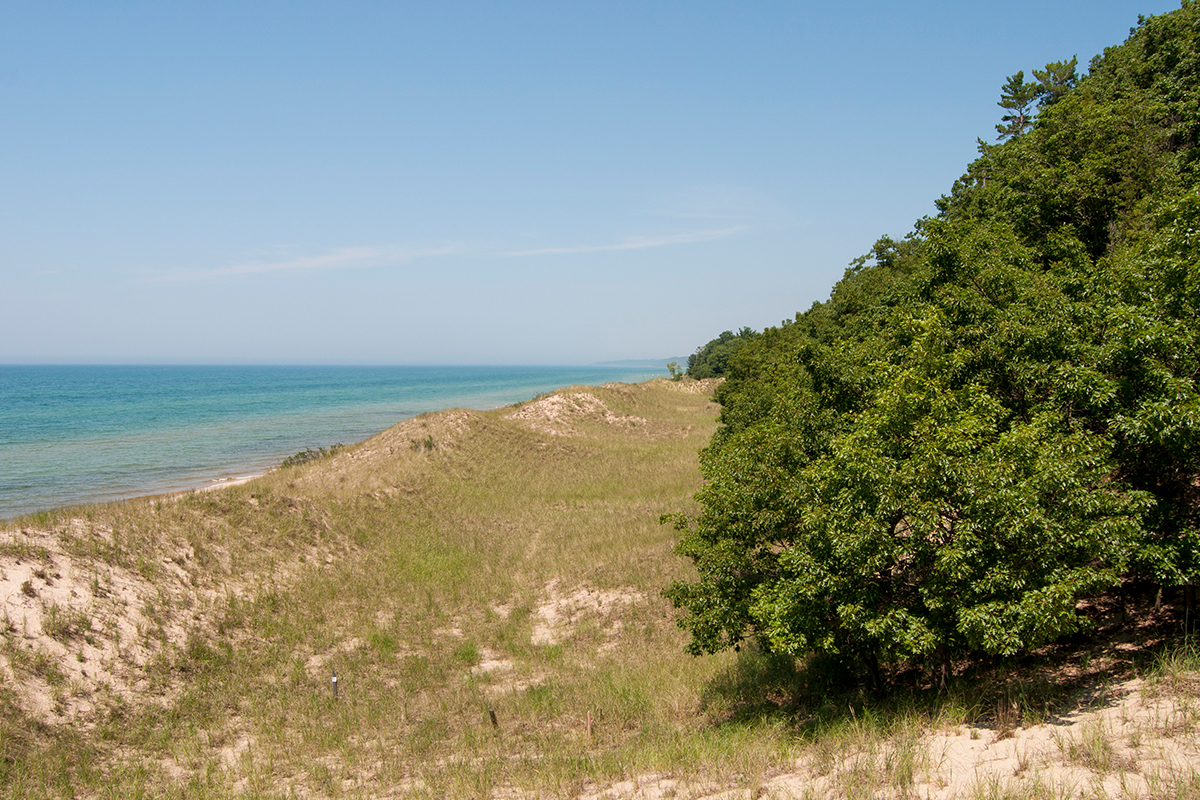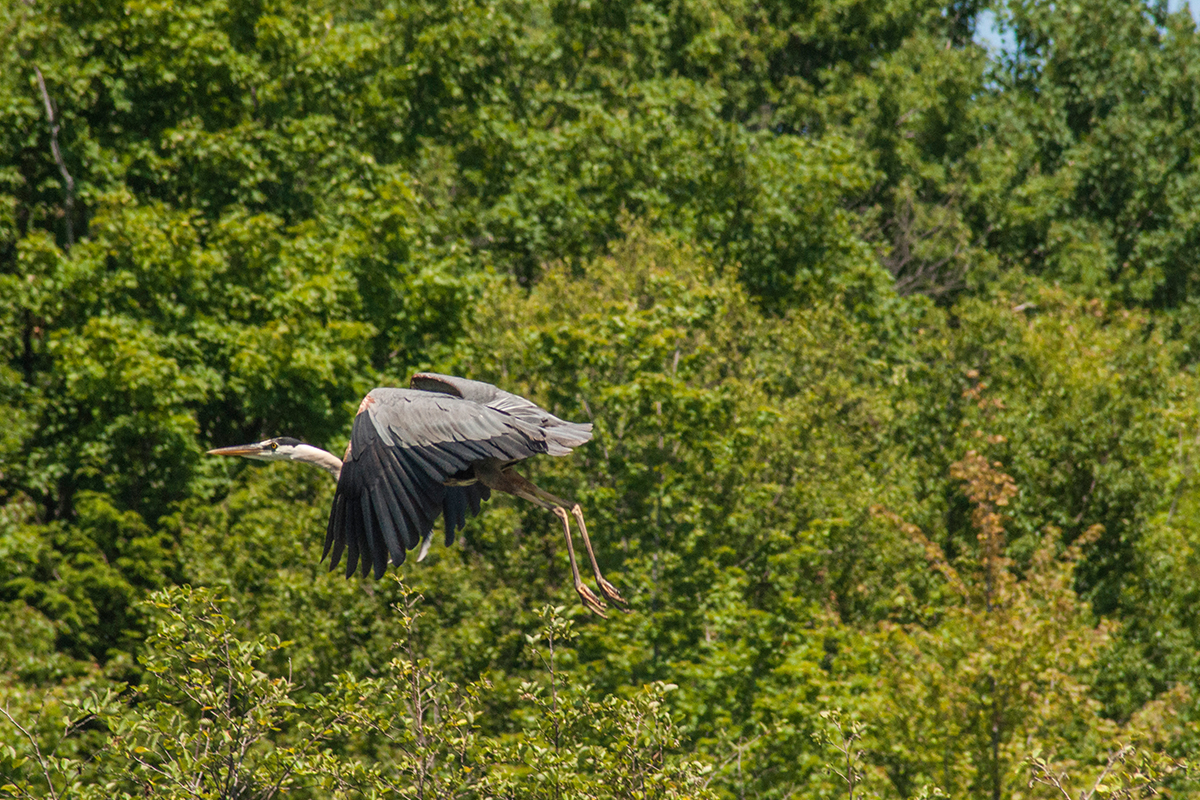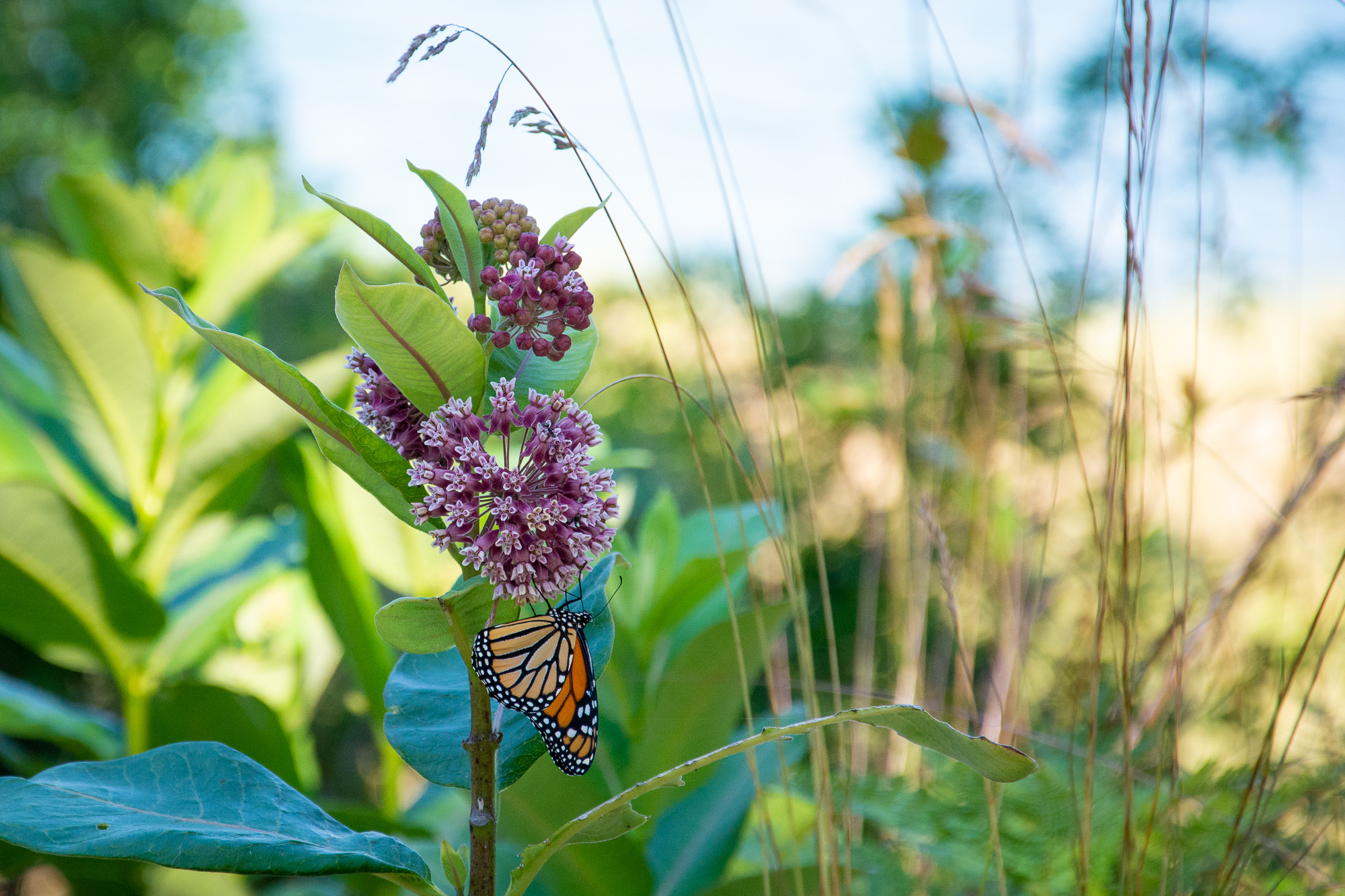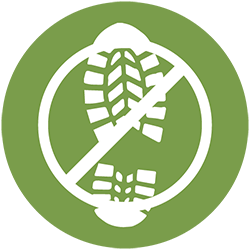At a Glance
- Approximate Street Address: 8501 Meinert Park Road, Montague, MI
- Located in northern Muskegon County, Flower Creek Dunes Nature Preserve protects unspoiled dune habitat along the lakeshore. A boardwalk leading to an overlook provides panoramic views of Lake Michigan and the surrounding dunes.
- Trail length: 1.2 miles (round trip from Meinert Park). Download a Trail Map.
- Before you visit, check out our preserve guidelines. If you have any questions, feel free to contact us.
Visitor Information
Parking is available at Meinert Park, located at the west end of Meinert Park Road in Montague. Muskegon County Parks may charge a fee for parking. There are restrooms available seasonally in the Meinert Park parking lot.
From Meinert Park, walk about a quarter mile north along the beach to Flower Creek Dunes Nature Preserve. Please respect the private property between Meinert Park and the preserve and walk close to the water’s edge. The preserve is marked with a sign and a stairway that leads up from the beach to the top of the dune.
Flower Creek Dunes Nature Preserve provides a glimpse of what the Lake Michigan shoreline used to be—undeveloped and undisturbed. Thanks to support from the Community Foundation for Muskegon County, the John J. Helstrom Dune Ridge Trail brings visitors up a steep portion of the dune and leads to an overlook with impressive views of Lake Michigan and the surrounding area.
Flower Creek Dunes Nature Preserve is a Category 2 LCWM nature preserve. Category 2 preserves may have limited parking or shorter trail systems. Trails are narrower and may feature areas with steeper grades or staircases. Most trails can be hiked in 30 minutes or less.
















